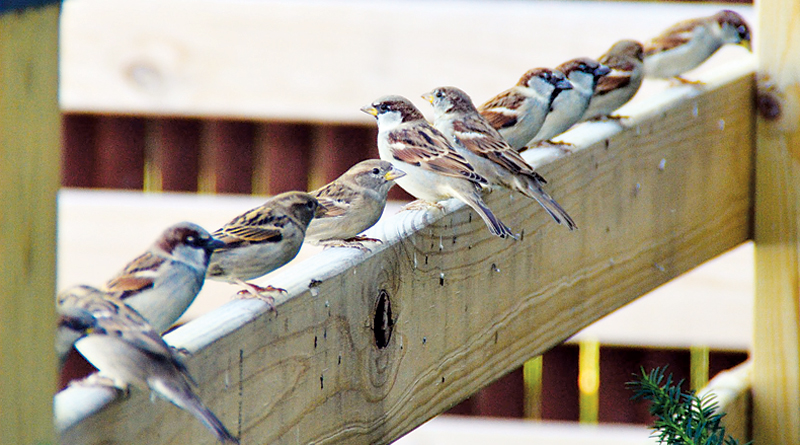SPECIAL MOMENTS IN THE WILD – Life In The Outdoors

One wintry morning a few days ago, a day when the sky was gray and snowy, blown by a strong cold wind, I went driving on a country road, hoping to see some wildlife activity, an uncommon bird, or maybe a mammal that should have been holed up for the winter. I didn’t expect to see much wildlife, but I wanted to get out, to leave my computer and the TV for a time.
Soon after leaving home I saw a kestrel perched on the power line by the side of the road. A short distance farther I saw a second kestrel on the wire. Kestrels are common birds, not only in northern Indiana but from the East Coast west to the Rocky Mountains. Still, it was nice to see them. Then I saw a third kestrel, flying, not perched on a wire. It was hovering, beating its wings rapidly as the snow swirled around and past it. Half a mile farther, I saw another kestrel hovering. Hovering, then plunging out of the sky at the sight of a mouse or other little critter in a grassy field is a common hunting technique of kestrels. Never before have I seen one hunting like that in a snow storm. I didn’t just see one hunting. A mile or two farther down the road I saw a second kestrel hovering, snow whipping past it.
Other wildlife I saw that morning were a flock of starlings, a raccoon, and an opossum, dead at the side of the road. I didn’t see a squirrel. I didn’t see another bird and the only live mammals I saw were cows and horses. Judging by numbers, it was an unsuccessful wildlife outing. But judging by what I saw, wildlife as I had never seen it before, it was a great outing.
Other wildlife I’ve seen recently were the birds at my bird feeders, house sparrows, cardinals, blue jays, downy, hairy and red-bellied woodpeckers, black-capped chickadees, white-breasted nuthatches, tufted titmice, goldfinches, mourning doves, four male red-winged blackbirds, surprisingly, and those winter visitors from the north, dark-eyed juncos and tree sparrows.
I saw a flock of robins near the entrance to the Lost Bridge West area of Salamonie River State Park. Robins in northern Indiana in December is certainly a special moment. I saw a flock of sandhill cranes, too, a siege of sandhill cranes, high overhead one morning. Sandhill cranes have increased greatly in number in recent years and it is not uncommon to see sandhill cranes in Indiana now, but usually earlier in the year, not in December. This was a large flock, fifty to sixty cranes, high, overhead.
I saw an adult bald eagle one clear morning a few days ago, over a harvested field, its white head and tail clearly visible. Seeing a bald eagle is always a special moment of the wild and it’s particularly true when the bird is an adult.
Seeing a fox is also always a special moment. I haven’t seen a fox in years but I remember well seeing a red fox on a winter day in Iowa when I was a boy. It had a rabbit, a freshly killed rabbit, still bleeding. When the fox saw me and ran, carrying the rabbit, it left a trail of tracks and spots of blood in the snow.
Plants provide special moments too. Finding the tiny flowers of pepper-and-salt, also aptly called harbinger of spring, poking up through snow in late February is certainly a special moment. Seeing a tree covered hillside speckled with the blossoms of trillium in April is also a spectacular moment.
What special moment awaits me next time I leave my computer and go for a walk or a drive?
- Birds As Weather Forecasters – Life In The Outdoors - December 17, 2021
- Rare Bird Spotted In Indiana – Life In The Outdoors - October 8, 2021
- MY EXPERIENCE WITH DEER – Life In The Outdoors - July 30, 2021

